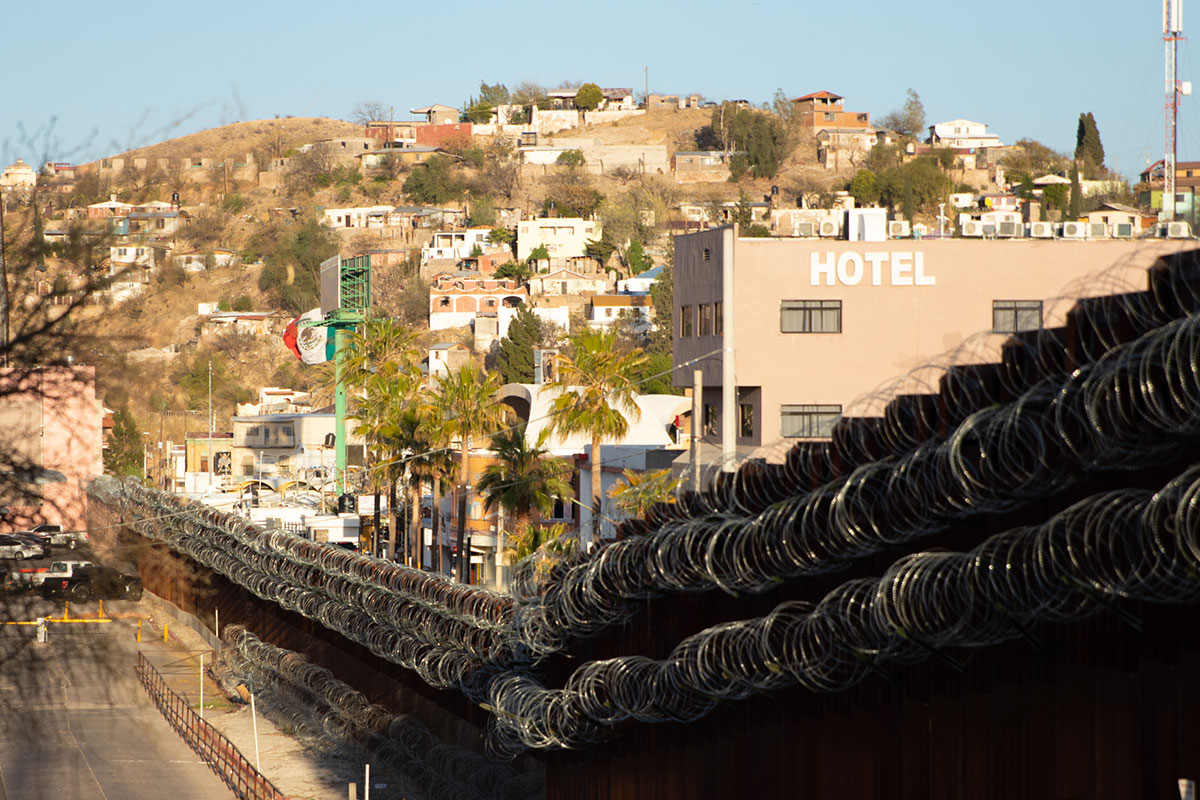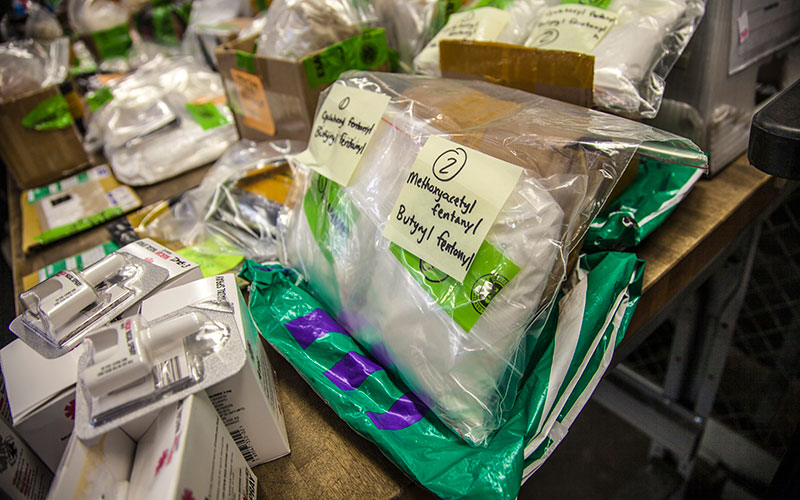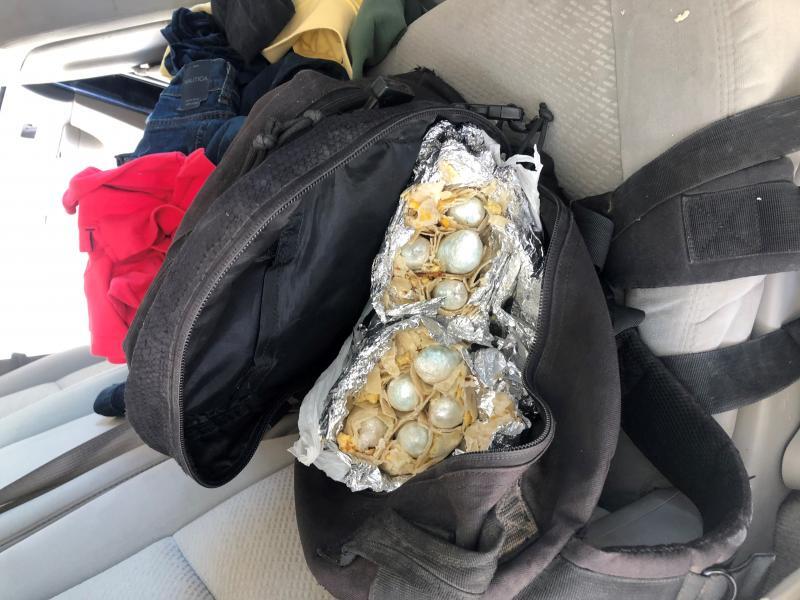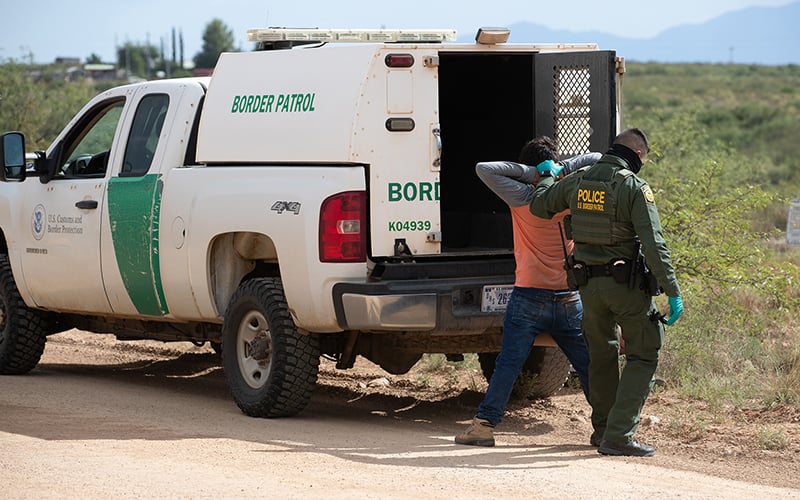‘Anything over 2 milligrams will kill you’
Overdose deaths in the U.S. hit a record high in 2020 and are continuing to rise, driven primarily by synthetic opioids – especially illicitly manufactured fentanyl, which often is laced in pills or cocaine.
Although marijuana traditionally has been one of the most profitable cash cows for Mexican cartels, steady legalization of cannabis in U.S. states has prompted a change in course. Fentanyl also is more profitable, with a gram going for $150 to $200 on the street, compared with about $15 for a gram of weed.
Fentanyl, which was developed in 1960 to manage pain in cancer patients, is smaller and easier to transport, leading to its increased flow across the border.
Chilton said one strategy used by smugglers is to wait for asylum-seekers to be picked up by Border Patrol agents, keeping them busy so the smugglers can make a run for it.
“Everybody’s always in camouflage,” Chliton said, “and they just bolt when you get up on them sometimes.”
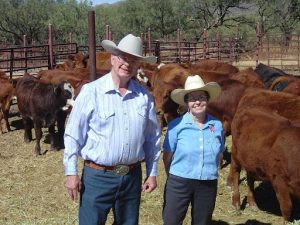
Jim and Sue Chilton own 2,000 acres of land and lease 48,000 more in Arivaca. “We had lots of bags of drugs four or five years ago – big backpacks of marijuana,” he says. “Now, it’s evidently cocaine, fentanyl, heroin, meth.” (Photo courtesy of Jim Chilton)
He said the unfinished border fence only makes the problem worse.
“In short, it’s a national security issue.”
Although Mexico remains the main foreign source of marijuana in the United States, “Mexican marijuana has largely been supplanted by domestic-produced marijuana,” according to the Drug Enforcement Administration’s 2020 National Drug Threat Assessment.
Marijuana seizures by U.S. Customs and Border Protection along the southern border have declined by 81% since 2013, from 1.3 million kilograms to about 249,000 kilograms (548,950 pounds) in 2019.
Those figures coincide with legalization in the U.S., where Colorado and Washington were the first states to approve recreational marijuana use in 2012, followed by Alaska, Oregon and Washington, D.C., in 2014.
In Arizona, medical marijuana was legalized in 2010, and voters in November approved recreational use. Medical use of marijuana is allowed in 36 states, while recreational use is now legal in 18 states, according to the National Conference of State Legislatures.
Enter fentanyl, a lab-made opioid that’s relatively easy to create, with a death threat lurking behind every dose.
On a recent visit to the DEA’s Nogales office, Special Agent Rene Amarillas shows me a photo of a miniscule amount of fentanyl on a shiny penny, for scale.
“That much can kill you?” I ask him.
Amarillas nods and says, “Anything over 2 milligrams will kill you.”
The dab on the penny is smaller than a grain of rice.
According to the Brookings Institution, CBP seized more than 42,645 pounds of cocaine, 5,222 pounds of heroin, 324,973 pounds of marijuana, 156,901 pounds of methamphetamine and 3,967 pounds of fentanyl in fiscal year 2020.
Although the fentanyl seizures may not seem like much in comparison, the lethal potency of the drug makes the numbers especially troubling.
From April 2020 through March 2021, there were nearly 97,000 drug overdose deaths in the U.S., and 75% of those involved an opioid. In the same 12-month period the year before, 73,000 overdose deaths were reported, with 71% involving an opioid, according to the Centers for Disease Control and Prevention.
Jacob Guerrero, 31, was one of those fatalities. He died in May 2020 after taking cocaine that had been laced with fentanyl. His mother, Theresa Guerrero of Tucson, believes the COVID-19 pandemic played a role in his drug use and death.
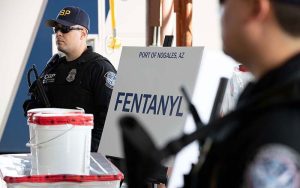
U.S. Customs and Border Protection officers in Nogales seized nearly $4.6 million in fentanyl and methamphetamine totaling close to 650 pounds in January 2019. Cartels are increasingly smuggling deadly fentanyl across the border. (Photo by Jerry Glaser/Customs and Border Patrol)
“He was, like so many other people, really lonely, and I remember he would go on drives by himself just to get out of the house,” Guerrero told Cronkite News earlier this year. “I have to wonder if he had been able to see other people, would they have noticed what he was going through before I did?”
Cartels that cook and move fentanyl across the U.S.-Mexico border are largely responsible for overdose deaths like Jacob’s. They import precursor chemicals from India and China to make the drug, but U.S. officials report the cartels recently have begun producing the chemicals on their own, essentially eliminating the middleman.
“The mass quantity of fentanyl already in pill form is coming from Mexico. And it’s clandestinely produced in different cities,” Amarillas said, describing covert labs tucked away in tropical jungles. “And we have seen direct cases where university chemists have been involved.”
In April, DEA Acting Administrator D. Christopher Evans announced a new effort, Project Wave Breaker, to disrupt the flow of fentanyl into the United States.
“While a major entry point for fentanyl is the Southwest border, the cartels are spreading their poison into communities across the nation,” he said. “Through this initiative, we’re tackling a very real public health, public safety and national security threat, identifying the most egregious street-level networks in our communities and working our way up through the supply chain.”
